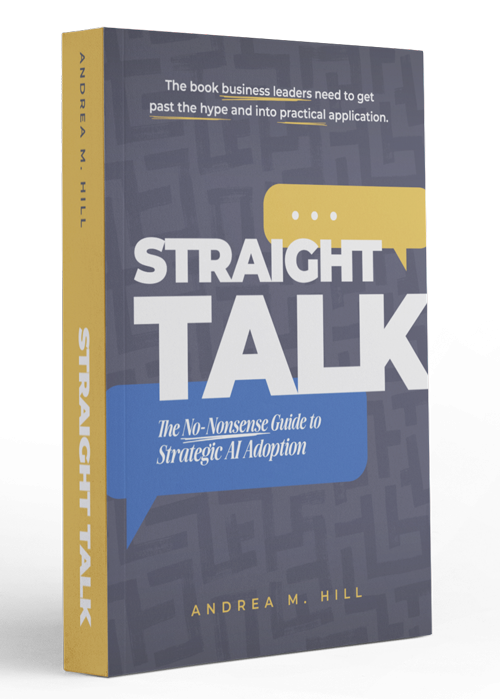How to Write a Case Study

Marketing can seem opaque at times: we get a job to do, we do it, and nobody really sees the steps between “idea” and “execution.” Furthermore, we are immersed in a world of text and image, always taking pictures and writing texts and email, so it’s not exactly self-evident what special skills writers, social media managers, and graphic designers bring to the table and why they’re worth investing in.
In addition to blogs and e-books, another type of writing we produce for clients is the case study. This is a special type of writing with expectations and conventions of its own. Even more than blogs, it requires the writer to be persuasive while being concise and readable. Case studies also involve testimony from an actual customer gathered through an interview, conducted either by the writer or by someone with specific interviewing skills. While it takes a team effort to produce a case study, these types of papers provide a unique sales tool to the clients we produce them for.
What is a Case Study?
A business case study is a data-based investigation into some aspect of your business. While a blog post might educate a potential customer on a particular aspect of your product or service, a case study explores the circumstances and results of an actual implementation of your service. It doesn’t deal in abstractions or what a product “could” do for a customer; it looks at what a product has actually done for a customer.
Why Write a Case Study?
A case study is like social proof for B2B decision-makers. Social proof allows a business to say, “You don’t have to take my word for it; just look at all of these satisfied customers.” In a case study, you have not only testimonials from a customer who likes you enough to participate in a case study but a detailed look at the process that led them to you, a narrative about how you helped solve their problems, and, ideally, some data to back it up. It’s a great way to assuage any concerns a potential customer might have about your customer service or product effectiveness. When a customer is close to making a decision, a great case study might be the difference between choosing you and choosing someone else.
Preparation: The Interview
To write a great case study, you have to choose the right customer to profile in your case study. The subject of a case study should be a customer you have a good relationship with, one who is more than satisfied with your products. You should also choose a customer that represents the type of customer that is the right customer for your business. At the same time, you also have to consider how good of a testimonial they’ll be able to give you. You want someone who knows the product and the implementation process well, can speak in detail about it, and can speak well enough to provide you with quotable material.
You might not get your first choice, so have a few customers lined up. An interview might take an hour or more out of someone’s day, and they might feel that their time is best spent working on something else. If you worked with them too long ago for them to remember the details of implementation, they might not be a great source. On the other hand, if they are still getting bedded in with the service you provided them, it might be too soon to turn to them for a case study.
So to recap, a good subject for a case study is a customer who:
- Genuinely loves your product or service
- Can speak from experience about the implementation process and results of implementation
- Can give you lots of quotable material
- Implemented your product recently enough to remember the process, but not so recently that they still don’t have enough data to measure its effectiveness
It takes a good interviewee to produce a good case study, but it takes a good interviewer to get the best out of that interviewee. A good interviewer puts the interviewee at ease, creating a conversation rather than an interrogation. Ideally, they’ve worked directly with the customer in the past, and they know the product or service in question inside and out. As the interview subject is likely an expert in their field, they will speak in the specialized vocabulary of their field. The interviewer will have to ask questions in a way that elicits straightforward answers without too much jargon, and where jargon is present, the writer will have to be able to distill it to ordinary language without losing the specificity that jargon offers.
The Writing Process
Case studies have a clear format, so outlining is that much easier than with a more freeform blog post. It’s a matter of reading through the interview and pulling out relevant information and the right quotes, and putting everything in the right section.
But it also has to come in at under 1500 words. There are usually so many interesting tidbits in these interviews that a writer would be tempted to make room for it all, but we have to remember the words of Antoine de Saint-Exupéry: “Perfection is achieved, not when there is nothing more to add, but when there is nothing left to take away.” The person reading this case study isn’t settling into a comfy chair with a thick case study and a cup of tea. They have other things to do and many suppliers to evaluate. They want just the facts: what is the product, does it work, will it work for me?
So there’s a tension between what the reader needs and what the writer wants to do. The reader needs information they can act on, while the writer wants to explain everything interesting in rigorous detail. The writer’s task, then, is to find the most enlightening quotes and the right data: here’s where our business was before, here’s where it is now, and here are the numbers. It has to be brief, but it also has to make for compelling reading, which is no easy task.
How is a Case Study Structured?
There are a few different ways to organize a case study, but they all follow the same basic structure. This structure is designed with clarity and concision in mind. It looks something like this:
- Executive Summary: Overview of the customer, their problem, and your solution
- The Customer: Their business, their pain points, how they found you
- The Solution: How you helped, the implementation process, problems you encountered and solved along the way
- The Results: How the business improved, using data and testimonials
- Call to Action: The goal is to show new customers what you can do for them, so a case study should end with a call to book a consultation or request a quote.
The case study, like the blog post, has to be interesting to read, and telling a story is what holds a reader’s interest. But how can it tell a story within such a prescribed format?
Every story that is engaging as a story (and not, say, an experiment in prose or a character study) has a tightly controlled structure. So many great stories can be boiled down to this: a character has a normal life until they run into a problem (Act 1); they try to solve the problem and encounter difficulties along the way until they find a solution (Act 2); and they follow through and either solve the problem or they don’t (Act 3). But case studies aren’t tragedies. They have happy endings. Problems get solved, and our protagonist lives happily ever after.
And that is another way a writer’s storytelling instincts come into play. The interview subject becomes a protagonist, the kind of protagonist the reader can identify with. They are someone who encountered a problem in the course of their job, and they were competent enough to solve it. They are a decision-maker and a problem-solver for their company, just like the person reading the case study. A strong case study contains great quotes from your interviewee, but it also contains the real-life situations that are exemplary of their problem, your service, and your solution.
If the writer puts the reader in the shoes of the interviewee as they work to solve problems, it becomes easier for them to imagine themselves as your customer.
How Do You Use a Case Study?
A case study is part of a complete content marketing strategy. They occupy a position further down the purchasing funnel: a blog post might attract a customer to your website, an e-book might generate interest, and a case study might help them make the decision to choose you. Each of these types of content serve their own purpose in answering a customer’s questions, building your credibility, generating leads, and converting leads.
While you can post case studies on your website, they are most powerful when sent to a potential client during the sales process as a way to move the customer closer to a close. It can often provide the final piece of the puzzle that moves them through the funnel from consideration to conversion.
Andrea Hill's
Latest Book
Straight Talk
The No-Nonsense Guide to Strategic AI Adoption

Where other books focus on prompts and tools, this book gives business leaders what they actually need: the frameworks and confidence to lead AI adoption responsibly, without having to become technologists themselves.
Also available at independent booksellers and public libraries.
Are You Ready to Do Better Marketing?
WerxMarketing is all about performance marketing. That means giving you the tools you need to connect with customers, enable your sales efforts, and turn leads into loyal customers. Ready to learn more about how we do that? Book a free consult and bring your questions. See if you like working with us on our dime, and get some good advice in the process.